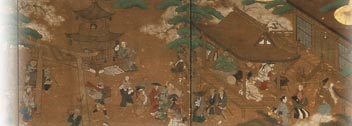Forum “The Great East Japan Earthquake and Art Culture: Eye-Witness Accounts from the Disaster Zone”
Outline
| date | June 14, 2011, 18:00–20:30 |
|---|---|
| Venue | Waseda University (Ono Auditorium) |
Details
In the Research Course on the Culture and Environment of the Arts offered by the Tsubouchi Memorial Theatre Museum Global COE Programme, people in charge of cultural facilities and organizations in prefectures ravaged by the March 11, 2011 earthquake and tsunami (Iwate, Miyagi, Fukushima, and Ibaraki) were invited to participate in a forum titled “The Great East Japan Earthquake and Art Culture: Eye-Witness Accounts from the Disaster Zone.” Held on June 14, 2011 (Tuesday) in Ono Memorial Hall, the forum opened with comments from ITO Yasuo, a guest lecturer of the course. Professor ITO based his remarks on surveys of the condition of disaster victims in the wake of the Great Hanshin-Awaji Earthquake that occurred 16 years ago. That disaster not only had a immediate negative impact on people and things related to the arts, resulting in, for example, the cancellation or postponement of events, it also had long-term effects that lasted for months and years afterwards in the form of reduced budgets for cultural events, the dispersal of staff, the loss of demand (audiences), and other consequences detrimental to the operational foundation of the arts. However, Professor ITO went on to note that the disaster also had positive effects, such as the arts being used for support and recovery efforts in affected areas, the awakening of a new understanding of the social significance of the culture of the arts, and the development of new approaches to art management.In the first half of the forum, panelists gave reports, accompanied by vivid photographs and other materials, concerning changes that have occurred in the environment for the culture of the arts as a result of the recent earthquake. NIINUMA Yuko of the Morioka Theater reported primarily on the damage that was sustained by member institutions of the Association of Public Theaters and Halls in Japan, located in three northeastern prefectures. She pointed out that physical damage to buildings and facilities was not the only problem: theatres and halls were converted into evacuation sites and storage facilities for aid materials, a situation that led to the freezing of operational budgets, the transfer of employees, and in some cases, the termination of the concession agreement for the operation of the facility. SUZUKI Taku of the Mori no Miyako Theatre Festival Project described the damage done to theatrical activity in and around Sendai, including the demise of a company that dispatched stage technicians and the dispersal of freelance staff members. OISHI Tokio of the Alios Iwaki Performing Arts Center reported that the complexity of the peripheral stage equipment at Alios (a new cultural facility) made it susceptible to earthquake damage. His comment that simple buildings and systems were stronger left a deep impression. He also pointed out that Alios’s annex was used as part of City Hall after the major aftershock that hit the area on April 11, and that membership in audience groups (for families and for citizens in general) in Iwaki has been reduced by half. MATSUMOTO Koshiro of Art Tower Mito reported that cultural facilities with dedicated, specialized staff have found it difficult to respond effectively to this situation and restart activities.
In the second half of the forum, the focus turned to what the art culture can contribute toward recovery after a disaster. Mr. SUZUKI started off with a description of the activities (surveys, delivery services, production, invitations, work) of Art Revival Connection Tohoku (ARC>T), which was organized primarily by theatre people. He also mentioned the concerts put on by the Sendai Philharmonic Orchestra to support recovery. Ms. NIINUMA continued the discussion by stating that disaster victims have shown extremely positive appreciation of this kind of art-based support, but now the time for condolences (what might be considered “Step 1”) is over and efforts must be directed towards restoring energy and vitality. In response to this observation, Mr. OISHI said that the opportunity should be seized to change a cultural environment in which communities in outlying regions consume the art produced in Tokyo. Similarly, Mr. MATSUMOTO stated that now is the time to remind people about the true meaning of art.
Questions were then taken from the audience, with discussions focusing on the nature of the cooperation between people connected to cultural facilities in Iwate, Miyagi, Fukushima and Ibaraki, and on the exchange of experiences with those who experienced the Great Hanshin-Awaji Earthquake. We sincerely pray that the disaster area may be restored and recovery achieved as quickly as possible, and hope that the matters discussed at this forum will contribute in some small way to the improvement of Japan’s future art culture environment.


